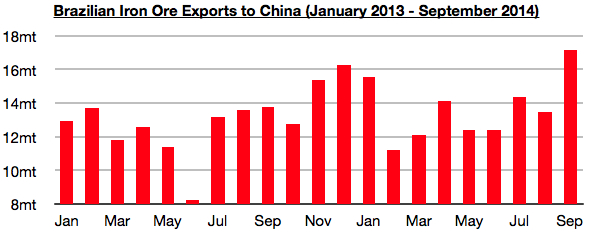11.3-11.7 Global Dry Bulk Market Weekly Comment
A close examination of recent spot chartering activity shows that 105 dry bulk vessels were chartered in the spot market last week. This is a decrease from the 128 vessels that were chartered during the previous week. As expected, rates for capesize vessels were able to find even greater support last week and capesize rates have stayed high. Last week's vessel chartering activity included the chartering of 52 capesize vessels (4 more than the previous week), 39 panamax vessels (13 less than the previous week), 7 handymax vessels (3 less than the previous week), and 5 handysize vessels (5 less the previous week). Capesize rates ended last week averaging $26,105/day, an increase of $1,692 (7%) from a week ago. Panamax rates ended last week averaging $9,480/day, a decrease of $403 (4%) from a week ago. Supramax rates ended last week averaging $9,209/day, a decrease of $117 (1%) from a week ago. Handysize rates ended last week averaging $6,629/day, a decrease of $210 (3%) from a week ago.
Looking at dry bulk cargo trends in specific detail, a particularly large amount of Australian coal cargoes, Indonesian coal cargoes, and Australian iron ore cargoes surfaced in the market last week. In total, 20 Australian coal cargoes came to the market last week. This is 5 more than surfaced during the previous week. All of these Australian thermal coal and coking coal cargoes will be sent to various buyers in Asia. In addition, 16 Indonesian thermal coal cargoes came to the market last week. This is 6 less than the previous week but still a very robust amount. The Indonesian thermal coal cargoes will be exported to various buyers in Asia. 15 Australian iron ore cargoes also came to the market last week. This is 3 less than surfaced during the previous week but still a large amount. The Australian iron ore cargoes will be exported to various buyers in Asia.
Data released last week shows that 17.1 million tons of Brazilian iron ore was exported to China in September. This is 3.6 million tons (27%) more than was exported in August and 3.3 million tons (24%) more than was exported in September 2013. It is encouraging for the capesize segment of the dry bulk market that Brazilian iron ore exports are now rising by a very large amount. Going forward, Brazilian iron ore exports to China are likely to rise to even higher levels through the end of this year as traditionally occurs every year. Brazilian iron ore production and shipments are extremely seasonal and this is very positive for capesize rates this year.

HEADLINES
- Do shipping markets want Biden or Trump for the win?
- All 18 crew safe after fire on Japanese-owned tanker off Singapore
- Singapore launching $44m co-investment initiative for maritime tech start-ups
- Cosco debuts Global Shipping Industry Chain Cooperation Initiative
- US warns of more shipping sanctions
- China continues seaport consolidation as Dalian offer goes unconditional